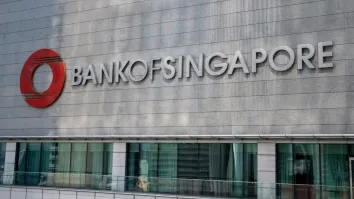Restoring business trust and confidence in the financial institutions
By Irving LowThe recent global financial crisis hammered home a painful but clear reminder that risk is pervasive, and can have far-reaching consequences.
KPMG’s recently completed Singapore Enterprise Risk Management (ERM) Survey 2010 revealed that only 61 percent of the Financial Institutions (FIs) surveyed had implemented ERM.
Notwithstanding the fact that the respondents categorised as ‘financial institutions’ include boutique investment firms, private equity firms and other fund management firms, we had expected all respondents in this category to have had at least some form of ERM considered.
While this was higher than the survey average of 51 percent, it is still far from what we should have expected in the aftermath of an economic turmoil which enveloped the financial services sector.
Knowing how much risk to take in pursuing profits, and right-sizing your organisation’s risk appetite accordingly, is perhaps one of the critical success factors in an effective risk management framework for an entire organisation.
Case in point, despite dark clouds warning of a market spill-over from the credit crisis, financial institutions which eventually failed made the conscious decision to pursue a path of aggressive growth. This involved taking on more and greater risks hoping for a market turnaround which we now know did not happen.
A post-mortem of the recent financial crisis suggests that there were weaknesses in the risk aggregation process. Risk management initiatives were fragmented and largely performed in silos.
By ‘betting’ on a counter-cyclical strategy to increase profits, many financial institutions, significantly and repetitively exceeded its internal risk limits which contributed to its collapse. This is particularly so among the ones which either failed completely or required significant government intervention and support.
The new risk culture
Forging a risk culture should therefore be a key focus for FIs today. Risk management can thus help balance this conflict between risk and reward.
Any unwarranted confidence in an ability to ‘read’ trends, coupled with adopting too short-term a view often causes people to focus on the ‘upside’, while neglecting the ‘downside’ risks.
Reviewing the risk models that financial institutions are using to measure and support their risk-taking activities should therefore become a greater priority on the risk management agendas of financial institutions.
By assessing risks based on historical data, financial institutions sometimes fail to consider rare events with potentially ‘destructive’ consequences. At the same time, to formulate decisions based on risk models in situations where many financial institutions lack the correct data to populate these models can be hazardous.
New risk indicators need to be adopted. These include stress testing liquidity risk, and improving the overall quality and availability of data to better support decision-making.
At the same time, it is also important for financial institutions to communicate their company’s risk appetite to staff, and refine its remuneration policy to shape and define appropriate risk-taking behaviour.
Truth of the matter
We are now entering a new era where the industry is facing its largest financial reforms since the financial crises.
Financial institutions need to rebuild trust and confidence among their stakeholders lost during the financial crisis. At the same time, risk officers need to become more empowered and given more of a ‘voice’ in the boardroom.
The role of financial regulators will also be critical, as they consider measures to protect the safety and soundness of the banking system and provide direction to the risk operating models for adoption.
As the economic recovery moves from a trickle to a rising tide of growth, financial institutions need to achieve the right balance between meeting their financial objectives while helping to moderate unnecessary risk-taking behaviour.


















 Advertise
Advertise










